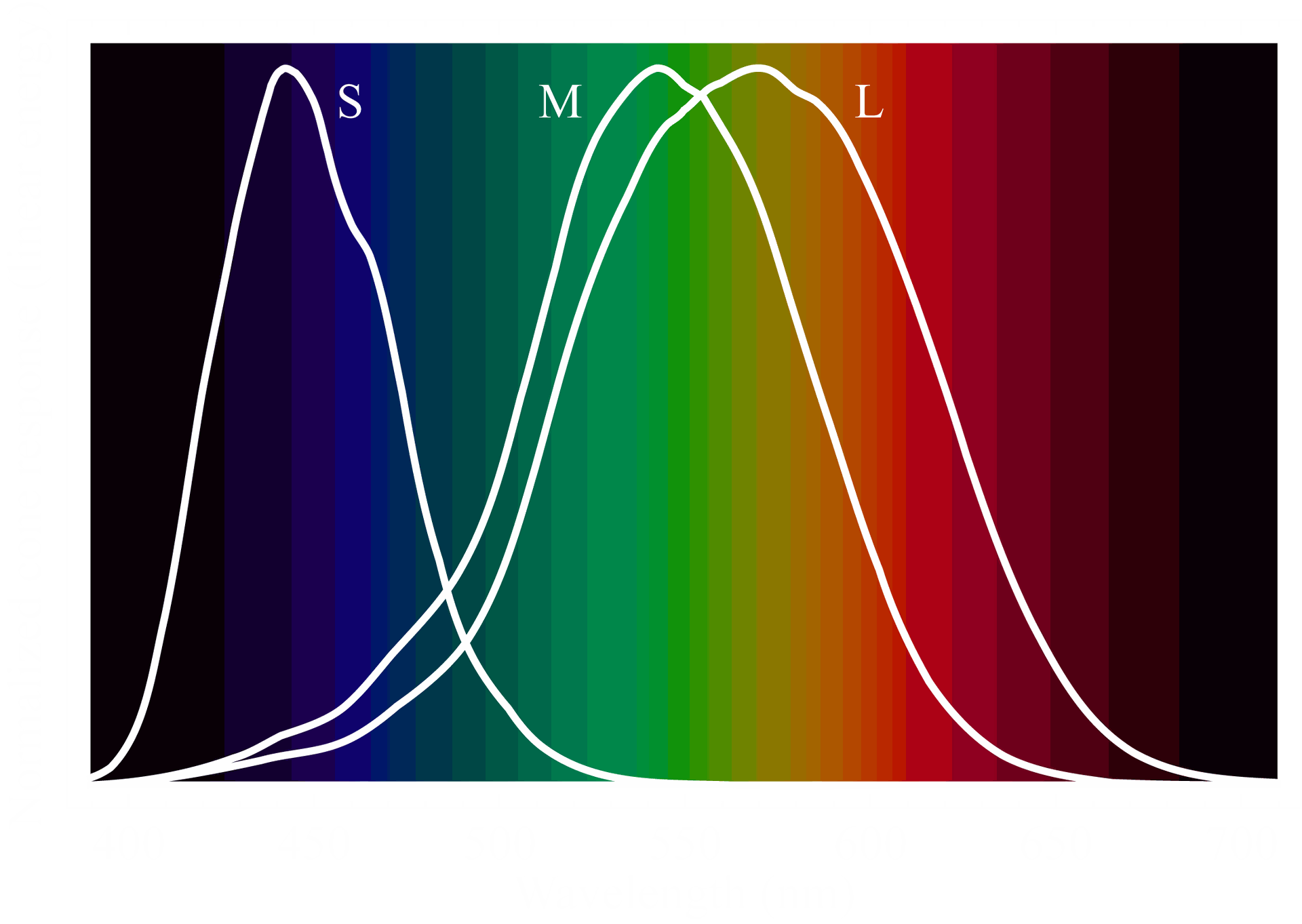Night vision devices using light intensification display images on a phosphor screen. Two "colors" of screen are distinguished: green phosphor and white phosphor. These two "colors" are distinguished by advantages and disadvantages, depending on the use of the device.
Here's a guide to help you understand the differences between these two types of phosphorescence and guide you in your choice.
First, some notions of optics.
Image intensifier tubes (IIT) are composed of three main elements. First, a photocathode converts light (photons) into electrons. Then the "microchannel plate" (MCP) multiplies the electrons. Finally, the phosphor screen is the most critical part of the light intensifier tubes. It reconverts the electrons from the photocathode and multiplied by the MCP into visible light.
Phosphorescent screens are generally composed of an optical fiber coated with a phosphorescent material. There are many phosphorescent materials, composed of rare earths and halogens (nothing to do with "phosphorus"). The "color" rendered depends on the material used, classified by manufacturers by the letter P and a number. The majority of tubes use P20 or P43 (green phosphor). However, tubes using P45 (white phosphor) are becoming mainstream among civilians.
The performance of the screen (and therefore largely of the tube) is determined by 4 characteristics: the decay time, the resolution, the conversion factor, and the emitted spectrum.
To simplify, the decay time defines the refresh rate of the image. By analogy, it would correspond to the "fps" (frames per second) of the tube. Most phosphorescent materials have a decay time on the order of a few milliseconds (again by analogy, about 200 fps), with the exception of P20 which is rather slow: 60ms (or ~17 fps).
Resolution defines the ability to recreate a fine image, and depends on the size of the particles used to manufacture the anode. Finer particles allow for better resolution, but at the expense of the conversion factor (and the price!). For these reasons, it is rare to see resolutions exceeding 80 lp/mm.
The conversion factor reflects the ability of the anode to convert electrons into photons. It depends on the phosphorescent material and the acceleration voltage of the electrons between the MCP and the screen. This factor alone is not enough to guarantee a clear image to the user, as perception also depends on the user's eye.
The emitted spectrum is therefore an essential parameter for optimizing perception. Figure 1 presents the emission spectra of P43 and P45.

Figure 1: Emission spectras of P43 and P45 phosphor screens (modified from Chrzanowski 2013)
Figure 2 represents the sensitivity peaks of the cones of the human eye. Figure 1 shows that the emission peaks of P43 are close to the perception maxima of the green and red cones (533nm and 564nm respectively). The peak on the left also corresponds to the maximum sensitivity zone of rods (at 498nm, not shown in Figure 2). For these reasons, P43 is the most widespread in the military world, since it is the one that best corresponds to the perception capacity of the cones, it makes the most of the screen's conversion capacity. P45, for its part, simulates white by adding a peak towards the maximum perception of the blue cones (Figure 1 and two, at 437nm). The central peak remains in the green zone (550nm), however the peak on the right moves away from the maximum perception of the red cones (600nm, figure 1, against 564nm, figure 2). P45 better stimulates the rods, whose spectral sensitivity is more spread out than that of the cones. Rods are more efficient than cones in the perception of contrast and play a more important role in peripheral vision (ASU inc. 2015).

Figure 2: Peaks of sensitivity of the cones of the human eye (modified from Mysore et al. 2016)
Is white phosphor competitive with green phosphor ?
The advantage of P45 (white phosphor) is that it simulates an image closer to natural human vision in low-light environments, i.e., in a black and white scale rather than in color. This more natural perception tends to be less tiring on the eye (ASU inc. 2015). Indeed, the use of P20 or P43 over long periods can cause eye fatigue in some users, inducing a perception of "false colors" (typically, the user sees in pink/purple). The additional peak in the blue of the P45 can help to better perceive contrasts in some users. The P45 stimulates the rods better than the P43, which gives the user better peripheral vision (ASU inc. 2015).
Despite these advantages, the strengths of the P43 should not be overlooked. The images generated by the P45 are darker than those generated by the P43 with an identical tube design, because the luminous efficiency of the P45 is lower. Some people experience less fatigue with the P43 because the spectrum corresponds better to the eye's perception capacity than the P45. A strong point not to be overlooked for the P43 is that the spectrum is less extended, which makes the design of the eyepieces much less complex. The P45 induces slight chromatic aberrations through the eyepieces, which makes the image slightly less sharp. This point is particularly important for applications such as photography.
White or Green phosphor: for which users?
With equal photocathode and MCP performance, a P43 screen will make the tube much more efficient than a P45 screen at low light levels. For any use where the tube's performance is critical, the P43 remains the best choice. Thus, the P43 is far from being dethroned by the P45 in the military world. Price can also be an argument, the P43 often being cheaper with equivalent performance to a P45. For any application related to photography, astronomy, or video, it is more advantageous to use P43 and correct the color in post-production.
For more "dynamic" applications, where the perception of contrasts and movement is more important, the P45 is more relevant. Typically, white phosphor is ideal in an urban and peri-urban environment. Finally, visual comfort is a big plus with the P45. Many users find the P45 image much more pleasant during prolonged use.
References :
Chrzanowski, K. Review of night vision technology. Opto-Electron. Rev. 21, 153–181 (2013). https://doi.org/10.2478/s11772-013-0089-3
Aviation Specialties Unlimited Incorporated. (2015). Generation III based P45 white phosphor image intensifiers [white paper]. Retrieved January 14, 2019 from Aviation Specialties Unlimited Incorporated.
Mysore A, Velten A and Eliceiri KW. Sonification of hyperspectral fluorescence microscopy datasets, F1000Research 2016, 5:2572 (doi:10.12688/f1000research.9233.1)
Hamilton, J.A., Roush, G., Kinney, L.M.J. et al. Comparison of Night Vision Technology for Close-Quarters Combat Operations: How Field of View Impacts Live-Fire Scenarios. Hum Factors Mech Eng Def Saf 4, 8 (2020). https://doi.org/10.1007/s41314-020-00036-z